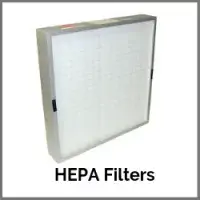Fortify Your Food Safety with HACCP Certification
Fortify Your Food Safety with HACCP Certification

I. Introduction
A. Explanation of HACCP Certification
HACCP (Hazard Analysis and Critical Control Points) certification is a systematic approach to food safety management. It involves identifying potential hazards in food production processes and implementing preventive measures to control these hazards. This certification aims to minimize the risk of foodborne illnesses by ensuring that food products are produced, handled, and stored safely.
B. Importance of HACCP Certification in Food Safety
HACCP certification is paramount in ensuring food safety for businesses in the food industry. It demonstrates a commitment to producing safe and high-quality food products by implementing rigorous control measures. HACCP certification not only mitigates risks but also helps businesses comply with regulatory requirements and gain consumer trust, thus safeguarding public health and enhancing brand reputation.
II. Understanding HACCP Principles
A. Overview of HACCP (Hazard Analysis and Critical Control Points)
HACCP is a preventive approach to food safety that focuses on identifying, evaluating, and controlling hazards at critical points in the food production process. It involves a systematic analysis of potential hazards and the implementation of control measures to ensure food safety. By proactively addressing risks, HACCP helps prevent foodborne illnesses and ensures the production of safe and high-quality food products.
B. Principles of HACCP Implementation
The implementation of HACCP involves several key principles aimed at effectively managing food safety risks. This includes conducting a comprehensive hazard analysis to identify potential hazards, determining critical control points (CCPs) where control measures are essential, establishing critical limits to ensure CCPs are under control, implementing monitoring procedures to assess CCPs regularly, and taking corrective actions when necessary to maintain food safety standards. These principles provide a structured framework for developing and maintaining a robust food safety management system.
C. Key Components of a HACCP Plan
A HACCP plan comprises essential components that are integral to the successful implementation of the HACCP system. These components include detailed product descriptions, process flow diagrams illustrating the flow of food through the production process, hazard analysis identifying potential hazards and associated control measures, critical control points (CCPs) where control measures are applied, monitoring procedures to ensure CCPs are within critical limits, corrective actions to address deviations from critical limits, verification procedures to confirm the effectiveness of the HACCP plan, and comprehensive record-keeping to document all aspects of the HACCP system. These components work together to effectively manage food safety risks and ensure compliance with HACCP standards.
III. Benefits of HACCP Certification
A. Ensuring Food Safety and Quality
HACCP certification serves as a robust framework for ensuring that food products consistently meet stringent safety and quality standards. By systematically identifying and controlling hazards throughout the production process, it effectively reduces the risk of contamination and minimizes the occurrence of foodborne illnesses, thus safeguarding public health and enhancing consumer confidence.
B. Compliance with Regulatory Requirements
Demonstrating compliance with regulatory standards and requirements is a fundamental aspect of HACCP certification. By adhering to the guidelines established by food safety authorities, businesses not only meet legal obligations but also mitigate the risk of penalties and legal consequences. This proactive approach to regulatory compliance reinforces the commitment to food safety and reinforces trust with stakeholders.
C. Enhancing Credibility and Marketability
HACCP certification is a powerful tool for enhancing the credibility and marketability of food products. By providing assurance to consumers, retailers, and other stakeholders regarding the safety and quality of the products, it fosters trust and confidence in the brand. This increased trust translates into greater market acceptance, brand loyalty, and competitive advantage in the industry.
D. Minimizing Risks and Liabilities
One of the significant benefits of HACCP certification is its ability to minimize risks and liabilities associated with food safety hazards. By implementing preventive measures and rigorous control procedures, businesses can proactively identify and address potential risks, thereby protecting themselves from potential financial losses and reputational damage. This proactive risk management approach is essential for ensuring the long-term sustainability and success of the business.

IV. HACCP Certification Process
A. Step-by-Step Guide to Obtaining HACCP Certification
- Conduct a Hazard Analysis: Thoroughly assess all stages of the food production process to identify potential hazards, ensuring a comprehensive understanding of risks.
- Identify Critical Control Points (CCPs): Prioritize areas where control measures are critical, focusing resources on the most significant points to maximize effectiveness.
- Establish Critical Limits: Define precise parameters for CCPs, incorporating scientific data and industry standards to establish appropriate control thresholds.
- Implement Monitoring Procedures: Develop detailed protocols for consistent monitoring of CCPs, utilizing reliable methods to promptly detect deviations and ensure rapid response.
- Establish Corrective Actions: Define clear steps for addressing deviations from critical limits, emphasizing swift action, root cause analysis, and preventive measures to maintain product safety and integrity.
B. Tips for a Successful HACCP Certification Process
- Commitment from Top Management: Secure visible support and active involvement from senior leadership, fostering a culture of accountability and prioritizing food safety initiatives.
- Form a Cross-Functional HACCP Team: Assemble a diverse team with expertise spanning various departments, promoting collaboration and comprehensive problem-solving.
- Provide Training and Education: Offer comprehensive training programs tailored to employees’ roles and responsibilities, empowering them with the knowledge and skills necessary for successful HACCP implementation.
- Regular Reviews and Updates: Schedule periodic reviews of the HACCP plan, leveraging feedback from stakeholders and external audits to identify areas for improvement and ensure ongoing compliance.
- Foster a Culture of Continuous Improvement: Encourage a proactive approach to quality and safety, promoting innovation and knowledge sharing to drive continuous enhancement of food safety practices and procedures.
V. Common Misconceptions about HACCP Certification
A. Addressing Myths and Misconceptions
Addressing these misconceptions is essential for understanding the true value of HACCP certification and fostering informed decision-making. By debunking these myths, businesses can appreciate the accessibility, risk mitigation benefits, and feasibility of HACCP implementation across various food production settings.
B. Clarifying Requirements and Expectations
Clarifying the requirements and expectations of HACCP certification is crucial for businesses seeking to embark on this journey. Understanding the regulatory standards, the scope of implementation, and the resources needed can help streamline the certification process and ensure successful outcomes. By providing clarity on the steps involved, businesses can approach HACCP certification with confidence, knowing the necessary measures to achieve compliance and enhance food safety standards within their operations.
VI. Maintaining HACCP Certification
A. Importance of Ongoing Compliance and Monitoring
Highlighting the significance of continuous compliance and monitoring underscores the dynamic nature of food safety management. Sustained vigilance and adherence to established protocols are imperative for upholding HACCP certification and ensuring the consistent delivery of safe and high-quality food products to consumers. Regular assessments and audits help identify areas for improvement and reinforce a culture of accountability within the organization.
B. Continual Improvement and Updates to HACCP Plans
Emphasizing the necessity for continual improvement reflects the adaptable nature of HACCP principles. Regular reviews and updates to HACCP plans enable businesses to remain proactive in addressing emerging risks, integrating technological advancements, and aligning with evolving regulatory requirements. This iterative process fosters resilience and agility, enhancing the efficacy and relevance of food safety management systems over time.
C. Dealing with Non-Conformities and Audits
Offering strategies for managing non-conformities and audits empowers businesses to navigate potential challenges effectively. Prompt identification of deviations, coupled with robust corrective actions and preventive measures, is essential for maintaining compliance with HACCP standards. Transparent communication and cooperation with regulatory authorities facilitate swift resolution of issues and demonstrate commitment to upholding the highest standards of food safety and quality.
VII. Conclusion
A. Recap of Key Points Discussed in the Blog Post
Summarizing the key points reinforces the core messages conveyed throughout the blog post, reinforcing the importance of HACCP certification in ensuring food safety, regulatory compliance, and consumer confidence.
B. Encouragement for Businesses to Pursue HACCP Certification
Encouraging businesses to pursue HACCP certification underscores the transformative impact it can have on their operations, reputation, and bottom line.
C. Final Thoughts and Resources for Further Reading
Offering final thoughts and additional resources for further reading provides readers with actionable insights and avenues for continued learning. Encouraging ongoing engagement with food safety best practices and industry developments reinforces the commitment to continuous improvement and excellence in food safety management.





